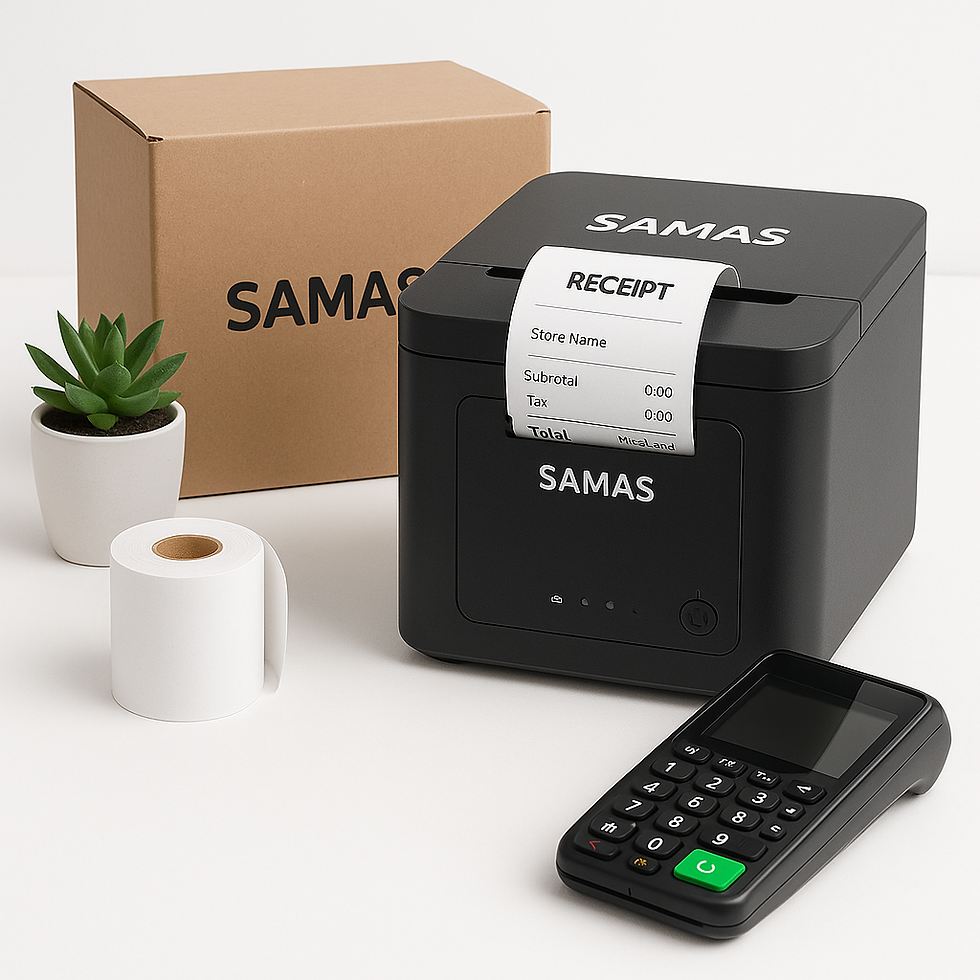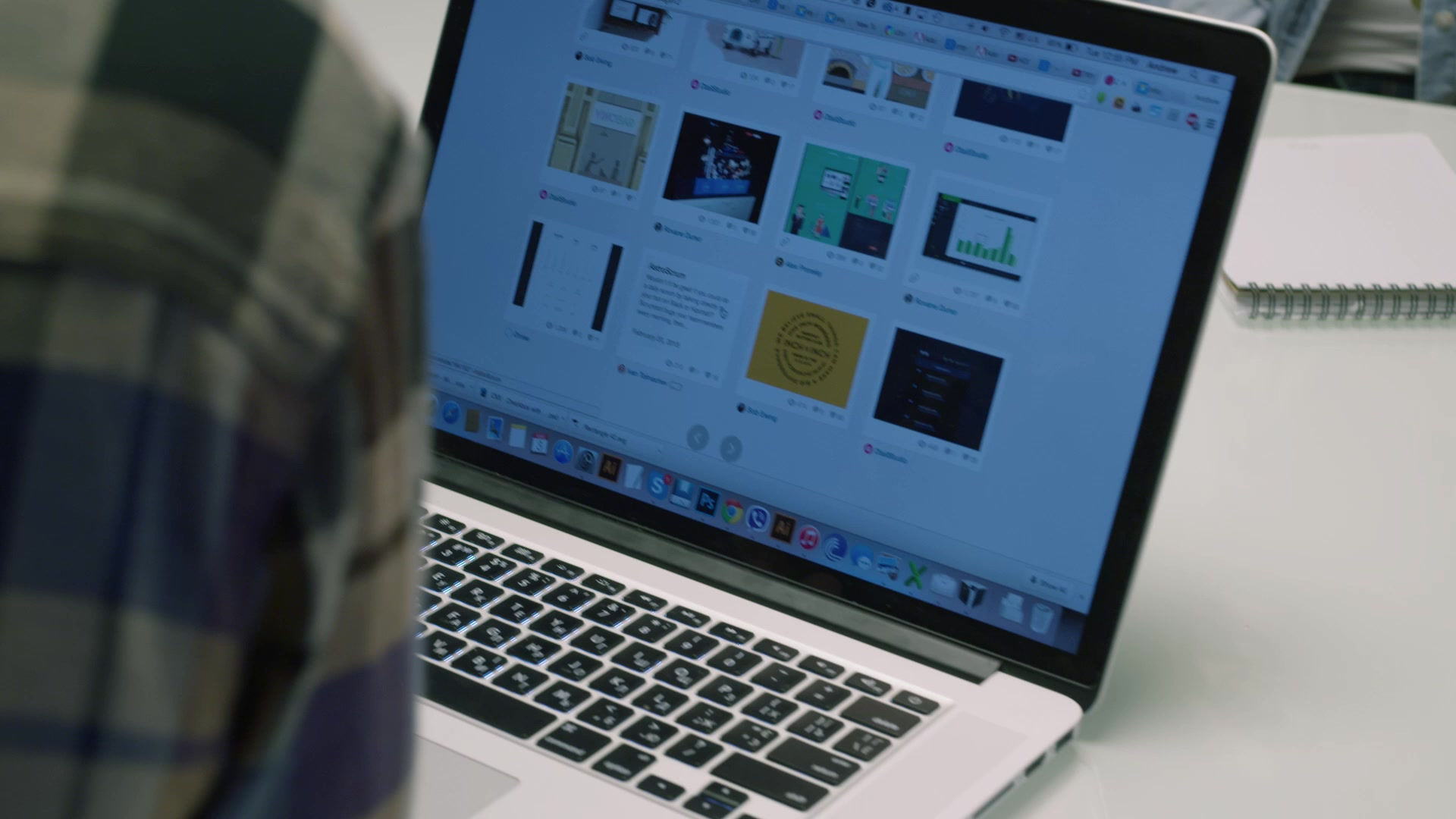Receipt Printer Buying Guide: How to Choose the Right One for Your POS System
- poscentrals
- Jul 31, 2025
- 4 min read
The best receipt printer depends on your business type, POS setup, and connectivity needs. For example, a thermal printer like the Bixolon SRP-E300 is ideal for retail in Sydney due to its fast, quiet printing and compact design. Restaurants might prefer the Element RW973 MKII for its multiple interface options, while mobile businesses benefit from Bluetooth-compatible printers. Let’s break down how to choose the perfect one.

Types of Receipt Printers: Which One Fits Your Business?
Understanding the main types helps narrow down your options. Here are the common types:
Printer Type | Best For | Key Features |
Thermal Printer | Retail, quick service, kiosks | Fast, quiet, no ink required |
Dot Matrix | Kitchens, heat-prone zones | Ink-based, durable in hot setups |
Inkjet | Custom branding, receipts w/ logo | Color prints, slower, high cost |
Bluetooth Printer | Mobile stores, pop-ups | Wireless, compact, portable |
Wi-Fi/USB/Ethernet | Permanent POS setups | Stable connectivity, wide options |
Summary: Choose the type that suits your operational environment — thermal for speed, dot matrix for heat, Bluetooth for mobility.
Key Factors to Consider Before You Buy
Here’s what you must evaluate to make a confident choice:
Connectivity Options: USB for wired stability, Wi-Fi/Bluetooth for wireless freedom.
Speed: Higher speeds (200mm/sec and above) = faster service, less queue time.
Print Quality: Crisp, legible receipts reduce customer confusion.
Paper Size: 80mm is standard; ensure compatibility with your POS software.
Durability: Look for spill-resistant models in busy environments.
Operating System Compatibility: Ensure drivers support Windows, iOS, or Android as per your system.
Ease of Setup: Plug-and-play options save time for staff with limited tech know-how.
Summary: Always prioritize usability, compatibility, and speed over unnecessary features.
Best Receipt Printers for POS Systems (with Pros & Cons)
Below are the top-rated models available in Australia for different business needs:
1. Bixolon SRP-E300
Type: Thermal, 80mm
Interfaces: USB, Ethernet, RS232
Ideal For: Retail stores, hospitality counters
Pros | Cons |
Quiet and fast (220mm/sec) | No Bluetooth/Wi-Fi support |
Compact design fits tight counters | Not splash-resistant |
Works well with Windows and Android | Limited mobile use |
2. Element RW973 MKII
Type: Thermal, 80mm
Interfaces: USB, Serial, Ethernet
Ideal For: Restaurants, large retail
Pros | Cons |
High-speed printing | Slightly bulky |
Sturdy and robust | Basic design |
Triple interface support | No wireless connectivity |
3. Element RW60 Ultra Compact
Type: Thermal, 80mm
Interfaces: USB, Bluetooth, Wi-Fi, Ethernet
Ideal For: Mobile businesses, modern stores
Pros | Cons |
Multiple connectivity options | Slightly higher price |
Ultra-compact and stylish | May require driver updates |
Great for wireless POS environments | Small size might limit cooling |
4. SAM4S HCube 102D
Type: Thermal
Interfaces: USB, Ethernet, RS232
Ideal For: Retailers wanting fast integration
Pros | Cons |
Fast print speed | Limited documentation |
Easy installation | Not wireless |
Great for Sydney retail POS setups | Software updates needed |
5. Nexa PX610II
Type: Thermal, 80mm
Interfaces: USB, Serial, Ethernet
Ideal For: Supermarkets, cafés
Pros | Cons |
Speedy performance | Not Bluetooth/Wi-Fi enabled |
Reliable build | Basic aesthetic |
Easy paper loading | No splash protection |
Summary: Bixolon SRP-E300 is great for speed, RW60 for wireless needs, and RW973 MKII for durability and large-scale use.
Quick Comparison Table
Model | Type | Interfaces | Best For |
Bixolon SRP-E300 | Thermal | USB, Ethernet, RS232 | Fast retail printing |
RW973 MKII | Thermal | USB, Serial, Ethernet | Busy restaurants |
RW60 Ultra Compact | Thermal | USB, Bluetooth, Wi-Fi, LAN | Mobile, wireless setups |
SAM4S HCube 102D | Thermal | USB, Ethernet, RS232 | POS counters, retail stores |
Nexa PX610II | Thermal | USB, Serial, Ethernet | High-volume shops |
Summary: For wireless needs, RW60 stands out. For high-speed, go with SRP-E300. RW973 MKII suits rugged environments best.
Geo-Specific Tips for Australian Retailers
If you're in Sydney, Melbourne, or Brisbane, here’s what to consider:
Look for warranty support in Australia — it ensures faster service.
Consider printers with Australian plug compatibility and GST-invoicing features.
In high-traffic areas like Sydney CBD, opt for models with faster throughput (≥200mm/sec).
For outdoor or mobile POS setups at markets or food trucks, choose Bluetooth/Wi-Fi models like the RW60.
Summary: Aussie store owners should focus on warranty coverage, local plug compatibility, and wireless mobility for outdoor use.
FAQ
Q1. What’s better: thermal or ink-based receipt printers?
Answer: Thermal printers are faster, quieter, and require no ink — ideal for most retail and hospitality environments.
Q2. Can I use a receipt printer with my tablet POS?
Answer: Yes, choose a model with Bluetooth or Wi-Fi (like the RW60) and ensure it’s compatible with your POS software.
Q3. Are receipt printers easy to set up?
Answer: Most models, especially USB-based ones like the Bixolon SRP-E300, offer plug-and-play setup with included drivers.
Q4. What paper size do I need?
Answer: 80mm (or 3-inch) width is standard. Double-check your POS system’s specs before purchasing.
Q5. Do I need a special printer for kitchen orders?
Answer: Yes, dot matrix printers are better for kitchens as they’re heat-resistant and have loud printout sounds.
Final Recommendation
Before purchasing, match the printer’s connectivity, size, and durability with your business needs. Look beyond just the price — choose a model that keeps your operations smooth and customer service fast.
Explore trusted receipt printers for your business at POS Central.
Also Read:









Comments